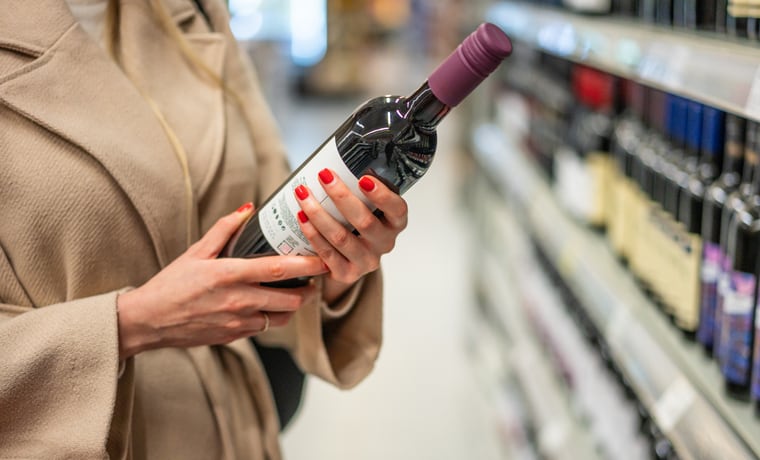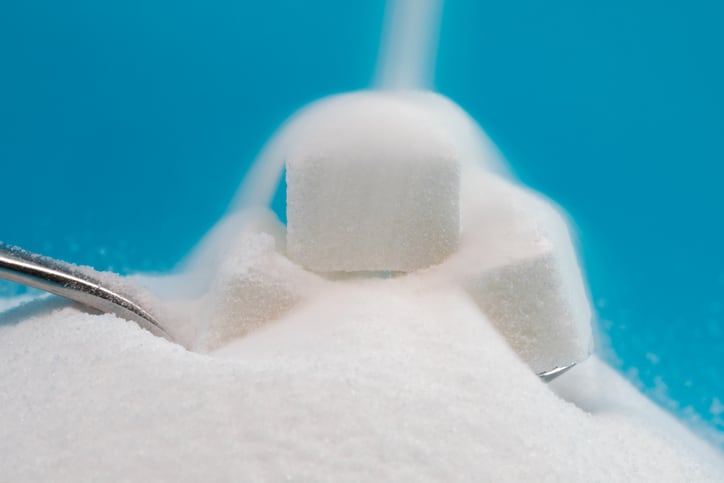The plan is set out in the UK’s 10 Year Health Plan for England, released this week, although does not outline details of what such warnings could look like.
Pressure for alcohol brands to include more information on their products has been building over the last decade. Although the industry has been championing the success of voluntary measures, stricter regulations are emerging around the globe.
Raising awareness
The estimated total societal cost of alcohol harm in England comes in at £27.4bn ($37.4bn) per year, according to the report: equivalent to more than 1.2% of GDP.
While much media coverage heralds the age of moderation, the reality is that there is still a population that drinks far above recommended limits and at dangerous levels (it’s estimated that around 4% of people drink as much as 30% of alcohol consumed each year).
A study from the Organisation for Economic Co-operation and Development (OECD) estimates that the UK spends a greater proportion of its healthcare budget on diseases caused by excess alcohol consumption than the OECD average (3.0% compared to 2.4%).
In the UK, alcohol must carry certain information (the number of units, and a warning against drinking when pregnant) but not nutritional information.
“To help tackle this, we will strengthen and expand on existing voluntary guidelines for alcohol labeling by introducing a mandatory requirement for alcoholic drinks to display consistent nutritional information and health warning messages,” announces the UK government.
“A mandatory requirement will bring alcohol labeling in line with existing health and nutritional labeling requirements for tobacco, food and alcohol-free drinks: all of which currently have more detailed nutritional and health information on their labels than alcoholic drinks. This will ensure greater public awareness of the health risks of alcohol consumption and help consumers make more informed, healthier choices.”
As just a small part of the 10-year report into the health of the UK, there is not yet much clarity on what such warnings could look like.
In the US, the then Surgeon General Dr Vivek Murthy made waves in January by suggesting that alcohol labels should carry cancer warnings.
And the WHO has made the same recommendation.
Alcohol brands in South Korea are already required to contain a health warning. And Ireland has passed legislation that will see health warnings on alcohol introduced from May 2026.
But the Portman Group, the UK alcohol industry’s self-regulator, is not convinced that alcohol health warnings are the way forward.
It believes much of the pressure to introduce mandatory warnings comes from the temperance campaign group Movendi and asks the government to take wider evidence into consideration.
“We do not believe there is a case for wider health warning labels which may be disproportionate when overall alcohol consumption is falling and the majority of people already drink within the Chief Medical Officer’s low-risk guidance,” said Matt Lambert, chief executive of the Portman Group.
“The vast majority of alcohol products in the UK already carry our best practice standards including pregnancy warnings, unit information, the Chief Medical Officer low-risk drinking guidelines and a link to information from Drinkaware. The industry is also making great strides in adding calorie and other nutritional labeling to packaging.”
Conversely, the UK’s Alcohol Health Alliance, a coalition of more than 60 organizations tackling alcohol harm, believes the plan is a missed opportunity.
It welcomes the idea of improved alcohol labeling and particularly health warnings.
However, it is disappointed the 10-year plan does not go further and look at other measures, such as marketing restrictions or policies such as minimum unit pricing (which were reportedly considered in the drafting of the report).
“The commitment to improve alcohol labeling is a welcome, long-overdue step towards greater transparency for consumers,” said Professor Sir Ian Gilmore, chair of the Alcohol Health Alliance.
However, he continues that “in the face of rising harm, these limited measures represent a wholly inadequate response to the scale of the problem.”
Alcohol is the leading risk factor for death, ill health and disability among 15–49-year-olds in the UK, and costs the NHS in England an estimated £3.5 billion every year, points out the Alliance.
When it comes to nutritional information for alcoholic drinks, Zoe Davies, nutritionist at campaign group Action on Sugar, who is based at Queen Mary University of London, says it simply makes sense to bring this in line with other food and non-alcoholic drinks.
“Sugary alcoholic drinks pose a double threat to public health: combining the harms of alcohol with those of excess sugar, which fuels tooth decay, obesity, and type 2 diabetes,” she said. “It is a scandal that these drinks have escaped both the sugar tax and coherent nutritional labeling, simply because they contain alcohol.
“The government’s commitment to mandatory, consistent labeling of alcoholic drinks is a crucial step forward. Consumers have the right to know exactly what they are drinking: far more than they currently do, given that shoppers get less information about alcohol than about milk or orange juice. This disparity is outrageous and unfair.”



